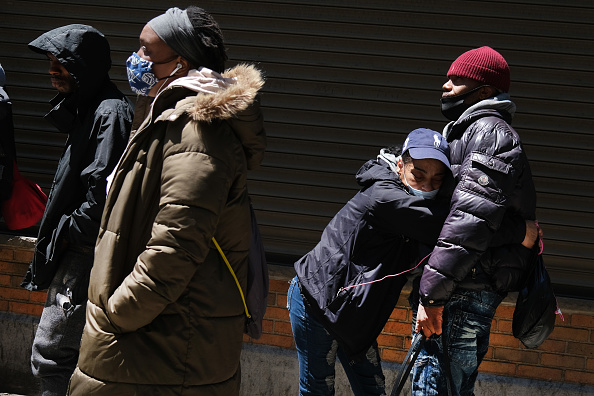One of the least discussed harms from school closures during the pandemic has been the extra costs families face with securing child care, finding alternative education arrangements and losing income due to missing work. State leaders must step in. Governors should use their American Rescue Plan funds to provide families with financial assistance to absorb the unexpected economic impacts created by school closures and student quarantines.
More than 6,273 schools shifted to remote learning earlier this month, compared with just over 400 in the middle of December, and more than one in three parents have had children miss school due to COVID quarantines. Every time a school closes or a child has to quarantine for two weeks, working parents must either find child care or risk missing work, which could result in a loss of income. The costs are more dire for women; last year’s extended closures led to more than 1 million women leaving the workforce to attend to the needs of their children at home.
Fortunately, governors have a tool that can help families absorb the shocks created by school closures and student quarantines. The American Rescue Plan’s $350 billion in Coronavirus State and Local Fiscal Recovery Funds provides flexible funding to help state and local governments respond to their communities’ public health challenges and economic needs created by the pandemic. Among the allowable uses for the funds are strategies to address the education and well-being needs of children in disproportionately impacted populations and communities.
Governors should consider using this flexibility to establish a temporary education recovery benefit that provides direct cash assistance to help low-income families cover the additional costs they incur due to closed schools and poor-quality remote learning. There is no shortage of possible uses for these funds: parents could spend this benefit on child care, school tuition, tutoring, online education programs, therapies for students with special needs, instructional materials, home internet connectivity, mental health care support or school transportation. The benefit could also be structured to make up for lost pay if low-income parents miss work due to a school closure.
The flexibility of the overarching statute allows governors to design a benefit that best meets families’ needs. Governors could create a temporary benefit triggered by a school closure that provides cash assistance for the duration. Or they could establish a more limited recovery program aimed at empowering families with financial assistance to pay for tutoring to help their children catch up academically. A benefit could also be made available whenever a child is quarantined in order to help families pay for child care and academic supports.
This use of funds is entirely consistent with law and regulations. The Treasury Department’s final rule provided additional clarification on recipient eligibility, which in general, applies to individuals and households that struggled economically due to the pandemic. It’s clear that school closures and quarantines have created economic hardships, particularly for families from lower-income backgrounds. An education recovery benefit would also technically function as a direct cash assistance program, which is encouraged throughout the final rule. Most importantly, there is nothing in the final rule that specifically prohibits the use of these funds to support this kind of financial assistance to families.
The state of Arizona is one of the first to launch such a program. The Open for Learning Recovery Benefit funds up to $7,000 for needs related child care, school-coordinated transportation, tutoring, tuition and school supplies. However, the program has come under scrutiny for discouraging masks mandates in schools, which Treasury asserts undermines the goal of limiting the spread of COVID-19 and therefore is an ineligible use of funds.
The easiest remedy for the state is to simply change the eligibility guidelines so that if any parent felt their child’s safety was at risk for attending school, they could access these funds. This would likely increase the number of eligible children, as evidenced by the sheer drop in attendance over the last few weeks due to some parents concerned about sending their children back to in-person learning. An Open for Learning Recovery Benefit would give those families a financial lifeline as they seek educational alternatives for their children.
But perhaps most important is that Treasury is concerned only with one eligibility design element of the program, not the structure of the program itself. Meaning that it has essentially endorsed the idea of using these funds to provide cash assistance for parents, which clears the way for other states to use their funds for this purpose.
The federal government has trusted low-income families to spend other direct cash assistance in their own best interests, whether it be the Child Tax Credit or P-EBT benefits. State and local governments should also trust these parents and caretakers to spend an education recovery benefit in their children’s best interests.
Originally published by American Enterprise Institute. Republished with permission.









[…] post Analysis: The Cost of School Closures Falls Heavily on Low-Income Families appeared first on Heartland Daily […]
[…] Click here to view original web page at heartlanddailynews.com […]